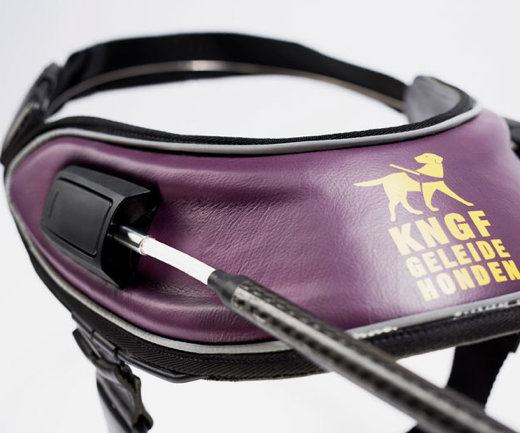Lightweight Reading
CW’s occasional round up of fun composite products and offbeat news surrounding the composites industry.
The world’s first recycled aerospace grade carbon fiber pickle ball net
Pickleball Central (Kent, WA, US) and the Composite Recycling Technology Center (CRTC, Port Angeles, WA, US) on June 21 announced availability of a new portable pickleball net system known as the SwiftNet. The new net system uses a patent pending design to transform how quickly and easily a pickleball court can be set up. The portable nets are made from recycled aerospace grade carbon fiber, making them about half the weight of other portable net systems available. With a carbon fiber boom and pole design, the SwiftNet can be setup by one person, in just a few minutes.
David Walter, CEO of the CRTC, says, “The CRTC is honored to have worked closely with Pickleball Central on the development and launch of this excellent product into the market. We believe customers will appreciate how quickly the lightweight system sets up and how it responds like a tournament net. It is an excellent offering that is helping to keep scrap carbon fiber out of landfills, creating jobs, and giving our customers far more places to play this rapidly growing sport.”
The SwiftNet can be ordered online at .
A lightweight carbon fiber guide dog harness handle

(Waalwijk, The Netherlands) has been awarded a contract for series production of a lightweight carbon fiber handle for a new guide dog harness. The harness was developed by (Leiden, The Netherlands) by request of the Royal Dutch Guide Dog Foundation (KNGF Guide Dogs). The new handle weighs less than 50% of the previous metal version, improving comfort for both the dog and the owner. The design incorporates features inspired by kite surfing equipment and motor sports technology, while its reflective trim enhances the dog’s visibility in traffic.
The need for speed… and on-screen accuracy

On May 31 Tom Cruise teased an image for Top Gun 2… and then the aviation community freaked right on out. In case you missed it the shot shows Maverick standing in front of an F-18 Super Hornet, and not the Navy F-35C, carrier variant of the F-35. There has been plenty of heated debate about these two aircraft which boils down to the F-35C being the more advanced fighter featuring stealth technology and the F-18 being the workhorse fighter that is currently in service.
The debate goes kind of like this:
Which plane is the future of the Navy? With its carbon-fiber composite skin and stealth technology, the F-35C is the more advanced fighter and the most stealthy.
Oh yeah, but which craft is most widely used today? The F-35C actually won’t be deployed until 2021 and the F-18 Super Hornet is currently in service.
Which is the fastest? They’re about the same: the Super Hornet’s top speed is 1,190 mph; the F-35’s speed is said to be around 1,200 mph.
And, which fighter is the current administration more behind? Citing the high costs of the F-35, President Trump has done some tweeting that indicates he prefers the Super Hornet, but the Navy seems to have need for both fighters as they have different tactical advantages.
So, which would make Top Gun 2 the most accurate movie? The Super Hornet is likely to be the most widely used fighter for the near future, which is probably why it was chosen.
At CW, of course, we’d love to see the carbon-fiber skinned F-35 on screen. On the other hand, the single seat F-35 is capable of taking out its adversary from well beyond visable range, so all of the dog fights and cockpit banter we think of when we think of Top Gun would definitely need to be portrayed in a different way. But then again, the nature of warfare is different today, so shouldn’t a school for up-and-coming fighter pilots be looking to the technology and tactics of the future?
At the end of the day, there’s a place and purpose for both fighters and the two will likely compliment each other in combat once the F-35C is deployed. And who knows, maybe the F-35 could still make a cameo in the film.
Related Content
Syensqo provides PARA resin for Artiphon musical instrument
Artiphon has chosen Syensqo’s Ixef PARA fiber-filled resin in the production of Chorda, its custom handheld electronic musical instrument.
Read MoreDyneema launches woven composite fabric with UHMWPE fiber
Dual-layer structure of Dyneema core with a fully woven Dyneema face fabric resists abrasion and wear, offering durability under significant load conditions and after prolonged use.
Read MoreBcomp, Siux bring natural fiber composites to padel tennis
Flax fibers enter the court through Siux’s GEA padel racquets, delivering high-performance, well-balance sports equipment to a rapidly growing sports market.
Read MoreComposites end markets: Electronics (2025)
Electronic and smart device innovations achieved through the use of advanced materials ranging from thermoplastic composites to biomaterials emphasize high-volume production and sustainability.
Read MoreRead Next
Next-gen fan blades: Hybrid twin RTM, printed sensors, laser shock disassembly
MORPHO project demonstrates blade with 20% faster RTM cure cycle, uses AI-based monitoring for improved maintenance/life cycle management and proves laser shock disassembly for recycling.
Read MoreScaling up, optimizing the flax fiber composite camper
Greenlander’s Sherpa RV cab, which is largely constructed from flax fiber/bio-epoxy sandwich panels, nears commercial production readiness and next-generation scale-up.
Read MoreCeramic matrix composites: Faster, cheaper, higher temperature
New players proliferate, increasing CMC materials and manufacturing capacity, novel processes and automation to meet demand for higher part volumes and performance.
Read More











